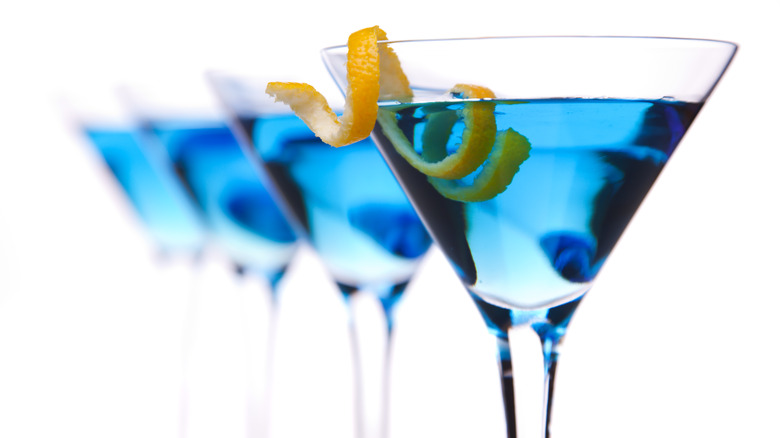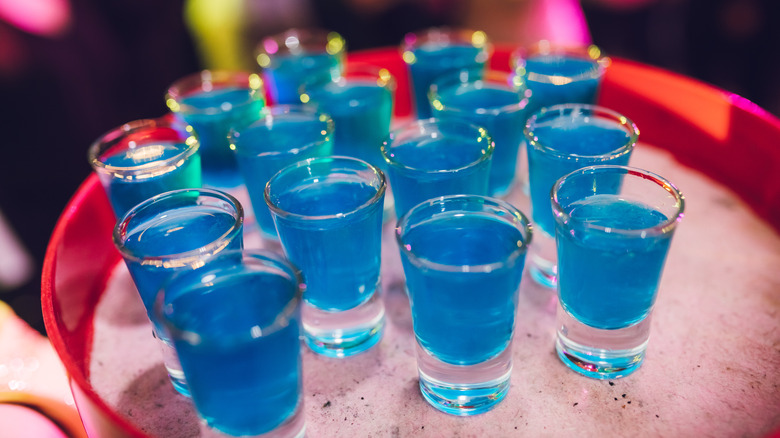Blue Cocktails Are Popping Up At High-End Bars, So What's In Them?
Long considered the domain of Tiki bars and Polynesian-themed restaurants, blue cocktails are getting a second look from patrons of high-end bars as mixologists flirt with ingredients that bring a touch of dramatic flair to the presentation. But in a definitive departure from the blue cocktails of yesteryear like the super-sweet Blue Hawaii — a blend of lemon juice, simple syrup, pineapple juice, Blue Curaçao, vodka, and white rum created in 1957 by legendary Honolulu bartender Harry Yee — today's most popular blue-hued cocktails offer a more subtle flavor profile.
So what makes a blue cocktail, well, blue? In most cases, it's a touch of Blue Curaçao, an orange-flavored liqueur made on the Caribbean island of Curaçao. And perhaps ironically, the most commonly used blue-toned ingredient in a blue cocktail isn't even blue. Blue Curaçao is a naturally clear liqueur with added artificial food coloring to produce the striking tone. Why? The most common theories suggest it was a marketing initiative by liqueur producers looking to set their curaçao apart from other orange-flavored liqueurs.
Not feeling the food coloring but still longing for a pretty blue cocktail? Other, more natural, options include ingredients like blue butterfly pea flower tea powder, blue matcha, and blue spirulina.
Singing the blues
This isn't the first time blue cocktails have been in the spotlight. Fascination with the exotic-looking beverages got a post-World War II boost in the U.S. when servicemen returning from the Pacific were nostalgic for a taste of tropical flavors and familiar tiki-esque drinks. Then, during a 1957 liquor convention in Hawaii, Dutch distiller Bols challenged bartenders to create new cocktails using Blue Curaçao. (Harry Yee and his Blue Hawaii took the prize.) But it may be the first time blue cocktails are making headlines for their more subtle taste and appearance — the result of bartenders' creativity combined with an increased focus on naturally blue-toned ingredients.
Consider, for instance, the aforementioned blue butterfly pea flower tea. Made from brewing the ground indigo-colored petals of the blue butterfly pea flower, a plant native to Southeast Asia, the tea brings barely-discernible earth tones to the flavor profile of cocktails. Equally effective in powdered form, in the hands of an experienced bartender, it can create a surreal-looking bright blue mixed drink. And the same can be said for blue spirulina. The so-called superfood often found in powdered form in health food stores is officially known as phycocyanin and is derived from blue-green algae. The FDA recently approved blue spirulina for use in coloring alcoholic beverages, so it's possible producers of Blue Curaçao will swap the ingredient responsible for its blue hue with this naturally-occurring ingredient.

